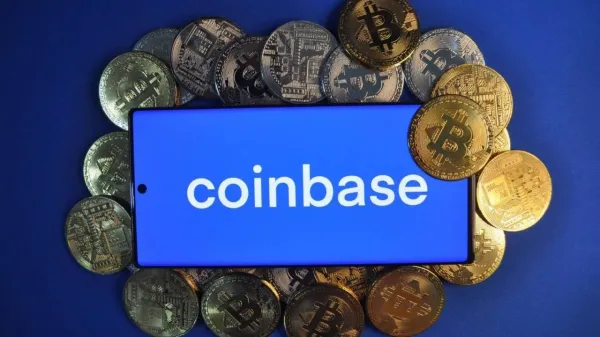Choosing between Coinbase and Binance for your Bitcoin trading can significantly impact your investment returns, especially when it comes to trading fees and withdrawal costs. As two of the world’s largest cryptocurrency exchanges, both platforms offer unique fee structures that can either boost your profits or eat into your gains depending on your trading style and volume.
Bitcoin fees have become a critical factor for both novice and experienced traders as the cryptocurrency market continues to mature. With Bitcoin’s price volatility and the increasing number of trading opportunities, the fee comparison between these major exchanges is essential for maximizing your investment potential. Whether you’re a day trader executing multiple transactions daily or a long-term holder making occasional purchases, the difference in crypto exchange fees can amount to hundreds or even thousands of dollars annually.
This comprehensive guide will break down every aspect of Coinbase vs Binance Bitcoin fees, from basic trading costs to advanced maker-taker fees and withdrawal charges. We’ll examine how each platform’s pricing structure affects different types of traders and provide actionable strategies to minimize your cryptocurrency transaction costs. Additionally, we’ll explore the deposit fees, conversion rates, and hidden costs that many traders overlook when choosing their primary exchange.
Our analysis goes beyond simple fee comparisons to help you understand the real-world implications of each platform’s pricing model. We’ll also reveal three proven money-saving tips that can dramatically reduce your overall Bitcoin trading costs regardless of which exchange you choose. By the end of this guide, you’ll have the knowledge needed to make an informed decision that aligns with your trading goals and budget constraints.
Bitcoin Fee Structures on Major Exchanges

How Cryptocurrency Exchange Fees Work
Cryptocurrency exchange fees operate on multiple levels, creating a complex pricing structure that varies significantly between platforms. Most exchanges, including Coinbase and Binance, implement a tiered system that considers factors such as trading volume, account type, and payment method. These fundamentals is crucial for calculating your actual Bitcoin trading costs.
The primary fee types include trading fees (charged on buy and sell orders), withdrawal fees (for moving Bitcoin to external wallets), deposit fees (for funding your account), and spread costs (the difference between buy and sell prices). Each exchange applies these fees differently, which is why a direct Coinbase vs Binance comparison requires careful analysis of your specific trading patterns.
Maker-taker fees represent another crucial component where “makers” add liquidity to the order book and typically pay lower fees, while “takers” remove liquidity and pay higher rates. This distinction significantly impacts active traders who need to understand whether their trading strategy aligns with maker or taker fee structures on each platform.
Binance Fee Structure Breakdown
Binance Bitcoin fees follow a volume-based tier system that rewards high-volume traders with progressively lower rates. The base trading fee starts at 0.1% for both makers and takers, but this can drop to as low as 0.02% for VIP users who maintain substantial trading volumes and BNB holdings. This structure makes Binance particularly attractive for frequent traders who can qualify for lower tiers.
The withdrawal fees on Binance vary depending on network congestion and are adjusted dynamically. For Bitcoin, the withdrawal fee typically ranges from 0.0005 to 0.001 BTC, which translates to approximately $15-$30 depending on Bitcoin’s current price. Binance also offers reduced fees when using their native BNB token, providing up to 25% discount on trading fees.
Deposit fees on Binance are generally free for cryptocurrency deposits, though bank transfers and credit card purchases carry additional charges. The platform’s fee calculator provides real-time estimates, helping traders understand their exact costs before executing transactions.
Coinbase Fee Structure Analysis
Coinbase fees operate on a more straightforward but often more expensive model compared to Binance. The platform charges a spread of approximately 0.5% on all transactions, plus additional fees based on the transaction amount and payment method. For small transactions under $200, Coinbase charges a flat fee ranging from $0.99 to $2.99.
Coinbase Pro (now called Coinbase Advanced Trade) offers a more competitive maker-taker fee structure starting at 0.5% for takers and 0.5% for makers, decreasing to 0.05% and 0.00% respectively for high-volume traders. This represents a significant improvement over regular Coinbase trading fees but still generally exceeds Binance’s rates.
Withdrawal costs on Coinbase vary by cryptocurrency, with Bitcoin withdrawal fees typically ranging from $1-5 depending on network conditions. While lower than some competitors, these fees can accumulate for frequent withdrawals. Coinbase also charges conversion fees when exchanging between different cryptocurrencies, adding another layer of cost consideration.
Detailed Fee Comparison: Coinbase vs Binance
Trading Fee Comparison Table
| Fee Type | Binance | Coinbase | Coinbase Pro |
|---|---|---|---|
| Base Trading Fee | 0.1% maker/taker | 0.5% spread + $0.99-$2.99 | 0.5% maker/taker |
| High Volume Discount | Up to 0.02% | Up to 0.05%/0.00% | Up to 0.05%/0.00% |
| BNB/Native Token Discount | 25% reduction | N/A | N/A |
| Small Order Minimum | No minimum | $0.99-$2.99 flat fee | Market rate |
Withdrawal and Network Fees
Bitcoin withdrawal fees represent a significant cost difference between the platforms. Binance typically charges 0.0005 BTC (approximately $15-20) for Bitcoin withdrawals, while Coinbase charges a variable fee based on network conditions, usually ranging from $1-5. However, these fees fluctuate based on Bitcoin network congestion and each exchange’s fee adjustment policies.
The key advantage of Binance lies in its transparency regarding network fees, with real-time updates showing exact withdrawal costs. Coinbase often absorbs some network costs during low-congestion periods, potentially offering better value for occasional withdrawals. For frequent withdrawals, Binance’s predictable fee structure often proves more cost-effective.
Internal transfers between users on the same platform are typically free on both exchanges, making this an important consideration for traders who frequently move funds between accounts or trade with specific partners.
Hidden Costs and Spread Analysis
Beyond advertised fees, both exchanges implement spread costs that can significantly impact your actual Bitcoin trading costs. Coinbase openly charges approximately 0.5% spread on all transactions, while Binance operates closer to market rates with minimal spread on high-liquidity pairs.
Currency conversion fees present another hidden cost, particularly for international users. Binance generally offers more competitive rates for fiat currency conversions, while Coinbase charges additional fees for international wire transfers and currency exchanges. These costs can add 1-3% to your total transaction expenses.
Slippage costs during high-volatility periods can exceed stated fees on both platforms, but Binance’s deeper liquidity pools often provide better price execution for large orders. This factor becomes crucial for traders executing substantial Bitcoin purchases or sales.
Top 3 Money-Saving Strategies
Strategy 1: Optimize Your Trading Volume Tier
Leveraging volume-based fee tiers represents the most effective way to reduce your Bitcoin trading costs on both platforms. Binance offers particularly aggressive discounts for high-volume traders, with fees dropping from 0.1% to as low as 0.02% for VIP members who maintain monthly trading volumes exceeding $150,000.
To maximize these benefits, consider consolidating your trading activity rather than spreading it across multiple exchanges. Track your monthly volume carefully and aim for tier thresholds that provide meaningful fee reductions. Many traders find that slightly increasing their activity to reach the next tier level saves more money than the additional trading costs.
Coinbase Advanced Trade also provides volume discounts, though less aggressive than Binance. Users trading over $100,000 monthly can access maker fees as low as 0.00%, making it competitive for high-volume Bitcoin traders who prefer Coinbase’s regulatory compliance and user interface.
Strategy 2: Utilize Native Tokens and Fee Discount Programs
Binance Coin (BNB) offers up to 25% discount on all trading fees when used to pay transaction costs. This discount alone can save significant money for active traders, often more than offsetting any price volatility in the BNB token itself. The discount applies to all cryptocurrency pairs, including Bitcoin trading.
Calculate whether purchasing and holding BNB for fee payments makes financial sense based on your trading frequency. For traders executing more than $1,000 in monthly volume, the 25% fee reduction typically provides positive returns even accounting for BNB’s price fluctuations.
While Coinbase doesn’t offer a native token discount program, they occasionally provide promotional fee reductions for new users or specific trading pairs. Monitor their announcements and take advantage of these limited-time offers to reduce your Bitcoin transaction costs.
Strategy 3: Timing Your Transactions and Withdrawals
Network congestion significantly impacts Bitcoin withdrawal fees and transaction processing times. Both exchanges adjust their fees based on Bitcoin network conditions, but timing your withdrawals during low-congestion periods can save substantial money. Typically, weekends and early morning hours (UTC) experience lower network activity.
Batch your Bitcoin withdrawals rather than making frequent small transfers. Since most withdrawal fees are flat rates regardless of amount, consolidating multiple small withdrawals into larger, less frequent ones can dramatically reduce your total withdrawal costs. Plan your Bitcoin movements in advance to avoid urgent withdrawals during high-fee periods.
Consider using each platform’s internal transfer capabilities when possible. If you’re trading with someone who uses the same exchange, internal transfers are typically free and instant, eliminating network fees entirely.
Advanced Fee Optimization Techniques

Maker vs Taker Strategy Implementation
Exploiting the maker-taker fee difference can significantly reduce your Bitcoin trading costs, particularly on Binance where the distinction is most pronounced. Makers add liquidity by placing limit orders that aren’t immediately filled, while takers remove liquidity with market orders or limit orders that immediately match existing orders.
Developing a maker-focused trading strategy involves placing limit orders slightly away from current market prices and waiting for the market to move to your price level. This approach requires more patience and market analysis but can reduce your fees by 0.05-0.1% per transaction on most exchanges.
Binance particularly rewards makers with lower fees across all volume tiers, making this strategy especially effective for Bitcoin accumulation or distribution over time. Practice placing strategic limit orders during consolidation periods when Bitcoin prices remain relatively stable.
Cross-Exchange Arbitrage Considerations
When using both Coinbase and Binance simultaneously for arbitrage opportunities, factor in the complete cost structure including trading fees, withdrawal fees, and transfer times. Successful arbitrage requires rapid execution, making Binance’s lower fees attractive, but Coinbase’s fiat integration might provide better entry and exit points.
Calculate your breakeven spread by adding both exchanges’ fees, withdrawal costs, and potential slippage. Bitcoin arbitrage opportunities typically need to exceed 1-2% to be profitable after all costs, making fee optimization crucial for this strategy.
Consider using stablecoins for inter-exchange transfers when possible, as they often have lower withdrawal fees and faster processing times compared to Bitcoin network transfers.
Long-term HODLing Fee Strategies
For long-term Bitcoin holders, minimizing purchase fees takes priority over trading fee optimization. Coinbase’s dollar-cost averaging (DCA) features can be cost-effective despite higher fees due to automation benefits and reduced emotional trading decisions.
Binance offers competitive rates for large, infrequent purchases that characterize many HODLing strategies. Their lower trading fees become more significant as purchase amounts increase, potentially saving hundreds of dollars on substantial Bitcoin acquisitions.
Plan your exit strategy fees in advance by each platform’s withdrawal limits and fee structures. Some exchanges offer reduced fees for larger withdrawals, which could influence your long-term storage and exit planning.
Regional Differences and Regulatory Impact on Fees
Geographic Fee Variations
Bitcoin trading costs vary significantly based on your geographic location due to regulatory requirements, banking partnerships, and local market conditions. Binance operates different regional entities with varying fee structures, while Coinbase adjusts pricing based on local regulations and payment method availability.
US users on Binance.US face different fees compared to international Binance users, often with higher rates due to compliance costs. Coinbase maintains relatively consistent US pricing but charges additional fees for international wire transfers and currency conversions that can add 1-3% to transactions.
European users benefit from SEPA transfer options on both platforms, typically offering lower deposit fees compared to international wire transfers. Your region’s optimal funding methods can significantly reduce your overall Bitcoin acquisition costs.
Regulatory Compliance Costs
Enhanced KYC (Know Your Customer) requirements and regulatory compliance contribute to fee differences between exchanges. Coinbase’s higher fees partially reflect their extensive compliance infrastructure and regulatory partnerships, particularly in heavily regulated markets like the United States.
Binance’s evolving regulatory compliance varies by jurisdiction, with some regions facing restricted services or higher fees to meet local requirements. These regulatory costs are typically passed on to users through adjusted fee structures.
Consider the total cost of compliance including potential tax reporting features, regulatory insurance, and legal protections when comparing cryptocurrency exchange fees. Sometimes higher fees provide additional security and regulatory clarity that justify the premium.
Future Fee Trends and Platform Evolution
Technology Impact on Fee Structures
Lightning Network integration and layer-2 scaling solutions are beginning to impact Bitcoin withdrawal fees across major exchanges. Both Coinbase and Binance are exploring these technologies to reduce customer costs and improve transaction speeds.
Smart order routing and algorithmic trading tools increasingly influence fee optimization, with exchanges developing features that automatically minimize costs for users. These developments may reduce the importance of manual fee optimization strategies over time.
DeFi integration and cross-chain protocols are creating new cost structures that may eventually challenge traditional centralized exchange models. Monitor these developments as they could significantly alter the Bitcoin trading costs landscape.
Competitive Pressure and Fee Wars
Increasing competition among cryptocurrency exchanges continues to drive trading fees lower across the industry. Both Coinbase and Binance regularly adjust their fee structures in response to competitive pressure and user feedback.
Zero-fee trading promotions and maker rebate programs are becoming more common, potentially changing the long-term fee landscape. However, these programs often come with conditions or limitations that require careful evaluation.
New exchange entrants frequently use aggressive fee structures to attract users, forcing established platforms like Coinbase and Binance to remain competitive. This trend generally benefits traders through lower costs and improved services.
Also Read: Ultimate Best Bitcoin Cash Exchange Top 12 Platforms 2025
Conclusion
Navigating the complex landscape of Coinbase vs Binance Bitcoin fees requires not just the headline rates, but the complete cost structure that impacts your specific trading patterns. Binance consistently offers lower trading fees and more aggressive volume discounts, making it attractive for active traders and high-volume users. However, Coinbase provides value through regulatory compliance, user-friendly interfaces, and integrated financial services that may justify higher costs for certain users.
The three key strategies outlined in this guide – optimizing volume tiers, utilizing fee discount programs, and timing your transactions – can significantly reduce your Bitcoin trading costs regardless of which platform you choose. Implementing these approaches systematically can save hundreds or thousands of dollars annually, especially for active traders.
Remember that the lowest fees don’t always translate to the best overall value. Consider factors like security, regulatory compliance, user experience, and customer support alongside fee comparisons. The best exchange for your needs balances cost efficiency with reliability, features, and regulatory protection.
As the cryptocurrency market continues to evolve, both Coinbase and Binance will likely adjust their fee structures to remain competitive. Stay informed about changes to trading fees, withdrawal costs, and new features that could impact your Bitcoin trading strategy. Regular evaluation of your exchange choice ensures you’re always optimizing for both cost and functionality in your cryptocurrency journey.
The decision between these platforms ultimately depends on your individual trading style, volume, and priorities. Use this comprehensive analysis as a foundation for making an informed choice that aligns with your Bitcoin investment goals and risk tolerance.


